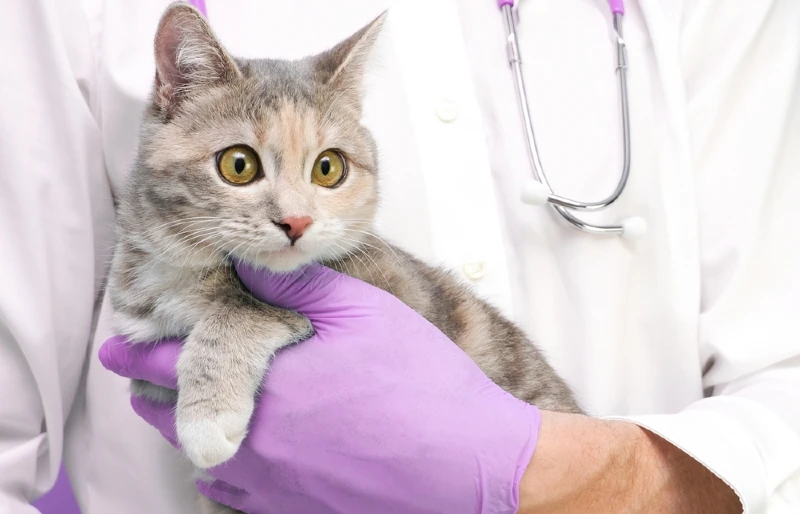14 Strongest Cat Breeds in the World: Pictures, Facts & History

Updated on

Click to Skip Ahead
Although cats may not appear strong in the human sense of the word, they’re surprisingly strong due to their qualities that make them impeccable predators. Cats are tough and skilled hunters because of their strong, flexible bodies, fast reflexes, sharp teeth, and retractable claws.
The cat kingdom is vast and diverse, from small domestic to enormous wild cats. There are several impressive domestic cats alongside tigers, lions, and jaguars, which are all recognized for their power and strength, and to get you acquainted, we put together a list of the strongest cat breeds in the world. Let’s have a look!
The 10 Strongest Domestic Cat Breeds
These domestic cat breeds may not be as powerful as their wild feline relatives, but they are undoubtedly strong and earned their place on the list due to their size, strength, and athleticism.
1. Maine Coon

| Origin | Maine, USA |
| Origin Date | Mid 19th century |
| Height | 10–16 inches |
| Weight | 8–18 pounds |
The largest domestic cat breed is the Maine Coon, and size is undoubtedly one of their distinguishing physical traits. The remarkable Maine Coon grows to a height of 10–16 inches and a length of up to 40 inches. Typically weighing 8–18 pounds, these powerfully built felines have broad chests, strong legs, and muscular bodies. They also have a majestic appearance with their large, piercing gold eyes and long, soft coat that sometimes has silky fur that drapes around the neck.
Maine Coon cats originated in Wiscasset, Maine. Their ancestry is shrouded in secrecy and legend. One legend holds that the cats are partially raccoons. The second asserts that Maine Coons are descended from Marie Antoinette’s prized cats. The third legend claims that Maine Coons are from Viking ship cats.
2. Norwegian Forest Cat

| Origin | Northern Europe |
| Origin Date | 1930’s |
| Height | 9-12 inches |
| Weight | 12-16 pounds |
The Maine coon and the Norwegian forest cat appear like cousins because of their large bodies and bushy tails, and there could be some truth to it. According to genetic analysis, the Maine coon is a descendant of an unknown, extinct domestic breed and the Norwegian forest cat.
They are a hardy breed with a solid frame, which has allowed them to survive for centuries in the wild. They now use their strength to scale cat trees, pounce on prey-like toys and run after excited children. They also have amazing climbing abilities because their claws are more durable than those of most breeds.
Some researchers believe that the Norwegian forest cat originated in Great Britain and traveled to Norway with the Vikings and Crusaders in the year 1,000 A.D. The Norwegian forest cat was designated as Norway’s national cat breed by King Olav V of Norway in 1938. In 1993, the Norwegian forest cat was granted full championship status by the Cat Fanciers Association.
3. Chausie

| Origin | Egypt |
| Origin Date | 1990’s |
| Height | 14–15 inches |
| Weight | 15–25 pounds |
The Chausie breed is a cross between oriental domestic cats and a jungle cat (Felis chaus). They have a similar athletic build, weathered coat, and strength as their ancestors, but the Chausie makes a wonderful companion, unlike their wild counterparts.
Chausies are considered quick runners, efficient climbers, and can jump 6–8 feet in height. The Chausie originated in Egypt thousands of years ago, but breeders in the United States did not start breeding operations until the 1990s.
4. Bengal
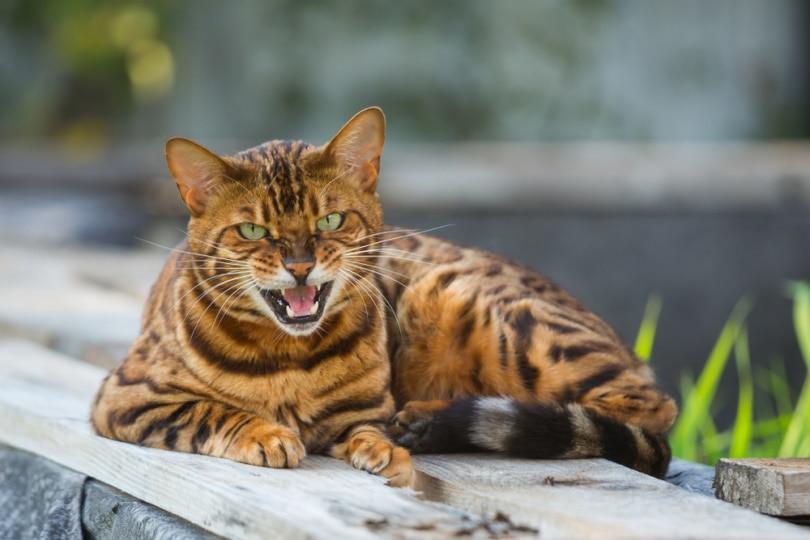
| Origin | United States |
| Origin Date | 1970’s |
| Height | 13–16 inches |
| Weight | 8-15 pounds |
It’s no surprise that Bengals made the list as one of the strongest cat breeds, and they look incredibly similar to their wild cat cousins. Although they look like they belong in the wild, they were bred for cat owners who wanted a wild cat in their homes without the risks involved with owning one.
They did this by crossing domestic cats, such as Egyptian Maus, Abyssinians, and Burmese, with the Asian Leopard Cat. When fully grown, Bengals are medium to large cats, often weighing more than 15 pounds. They have athletic bodies and are incredibly energetic. They enjoy climbing, and most are fond of playing in the water. The Cat Fanciers Association recognized the Bengal cat as a breed in 2016.
5. Savannah Cat

| Origin | United States |
| Origin Date | 1980’s |
| Height | 11–17 inches |
| Weight | 12–25 pounds |
Savannah cats are a hybrid breed developed by crossing a Siamese and a wild serval. They are powerful, tall, and agile. The Savannah acquired their name from the serval’s natural home, and they have a distinctive spotted pattern on their coat that gives them a wild appearance.
The first known breeding of the Savannah was carried out in the early 1980s by Pennsylvania-based Bengal cat breeder Judy Frank. Savannahs can leap over 8 feet high, and their longer back legs allow them to climb and jump, almost like wild cats. Compared to other domestic cats, Savannahs have a high prey drive and are unsuitable housemates for rodents, birds, or fish.
6. Burmilla
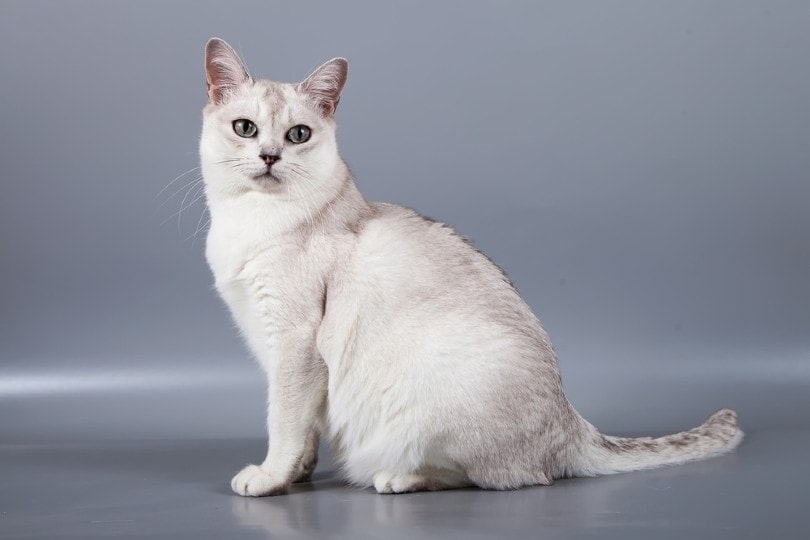
| Origin | United Kingdom |
| Origin Date | 1981 |
| Height | 10–12 inches |
| Weight | 6–13 pounds |
The Burmilla is a medium-sized cat that is compact and stocky but strong and muscular. The males of this short-haired breed are fairly robust, while the females are more graceful and daintier.
The Burmilla cat was created accidentally. A Chinchilla Persian male and a Lilac Burmese female had a litter of four kittens in 1981. The kittens had a distinctive, black-tipped coloring that inspired the breeding program to develop cats with the short-haired coat of the Burmese and the unusual color of the litter. Burmilla cats are rare and are still a developing breed in Britain.
7. Ocicat
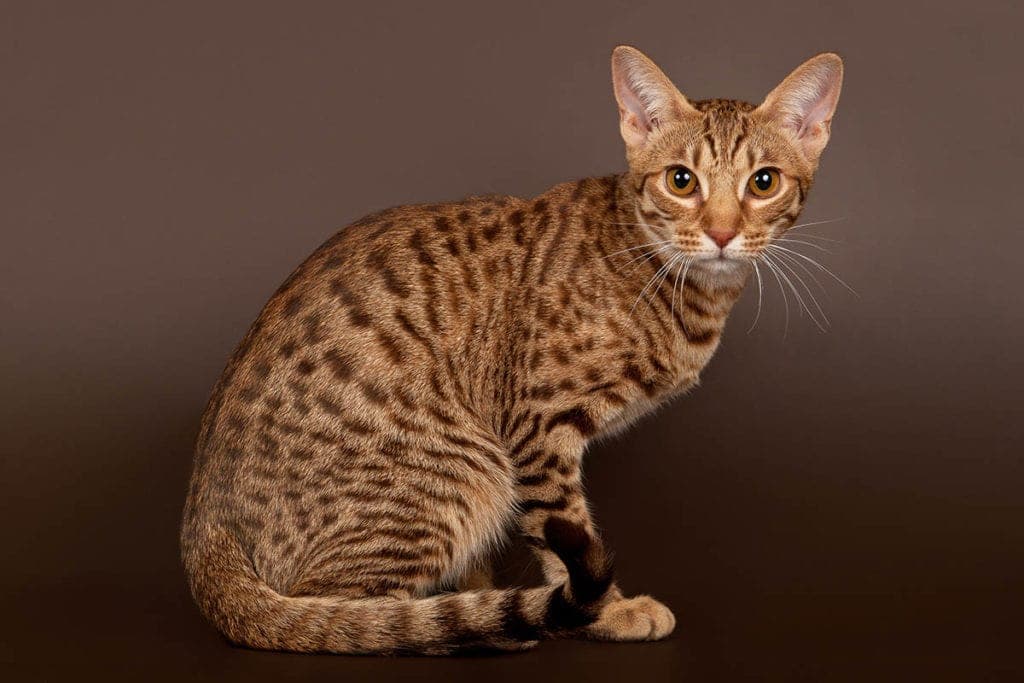
| Origin | United States |
| Origin Date | 1964 |
| Height | 9–11 inches |
| Weight | 6–15 pounds |
The Ocicat was created by crossing a Siamese and an Abyssinian, which resulted in a large, muscular cat. The Ocicat is a purebred domestic cat that looks like a wild cat but does not include recent wild DNA in its gene pool. The breed stands out because it resembles a wild feline in appearance with the behavior and temperament of a domestic cat.
A breeder seeking to generate a Siamese-type cat with the Abyssinian’s ticking point pattern accidentally created the Ocicat in 1964. The Ocicat received champion status from The International Cat Association (TICA) in August 1986. In 1987, The Cat Fanciers’ Association did the same.
8. Korat

| Origin | Thailand |
| Origin Date | 1959 |
| Height | 9–13 inches |
| Weight | 6–10 pounds |
The Korat is a little powerhouse whose outward appearance may be deceiving. They are described as having the spirit of a coiled spring that can powerfully spring into action; they pack a lot of muscle and strength into their medium-sized bodies.
This breed is officially recognized as a national treasure in Thailand. According to written accounts, the Korat may have existed during Thailand’s 1350–1767 Ayutthaya period. However, they only recently made their way to America. The first Korats, Nara and Darra, were brought to the United States in 1959.
9. Egyptian Mau

| Origin | Egypt |
| Origin Date | 1956 |
| Height | 7–11 inches |
| Weight | 8–12 pounds |
The beautifully spotted Egyptian Mau is a lean, strong, athletic cat and is distinctive for having a spotted coat, much like the Ocicat. However, their spots weren’t created by a breeder but occur naturally. They have a true athlete’s physique, and when they stand straight up, they appear to be on their tiptoes because their back legs are a little longer than their front legs. The Egyptian Mau is the fastest domestic cat, and they are known to be incredible jumpers.
After facing extinction after World War II, the Egyptian Mau was saved by a nurse in Rome who produced her first litter of Egyptian Maus in 1956. The Cat Fanciers’ Association and the Canadian Cat Association recognized the breed in 1968.
10. Abyssinian
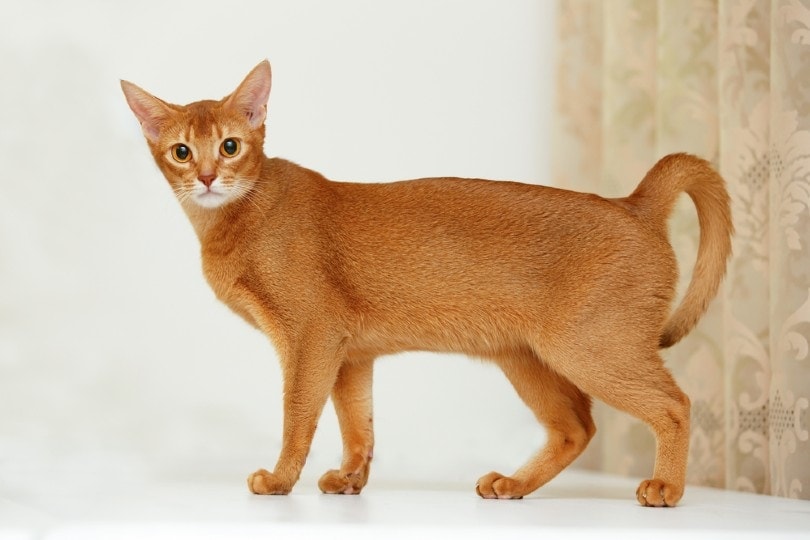
| Origin | South East Asia |
| Origin Date | 1900’s |
| Height | 12–16 inches |
| Weight | 6–10 pounds |
The medium-sized Abyssinian cat has a lengthy physique and well-defined muscles. They’re energetic cats that enjoy playing and jumping. Although they’re one of the oldest breeds, the origins of the Abyssinian have always been a mystery.
There was a time when it was widely believed that the cats came from the area around the Nile River, and it’s understandable why, given the obvious similarities between the breed and the cats from ancient Egypt. However, more recent genetic studies have proved that their ancestors originated in Southeast Asia and along the Indian Ocean coast.
The 4 Strongest Wild Cat Breeds
We know wild cats are powerful apex predators, so it’s only fitting to include them in our list of strongest cat breeds. They are incredible predators with muscular builds, excellent stamina, and admirable speed.
11. Tiger
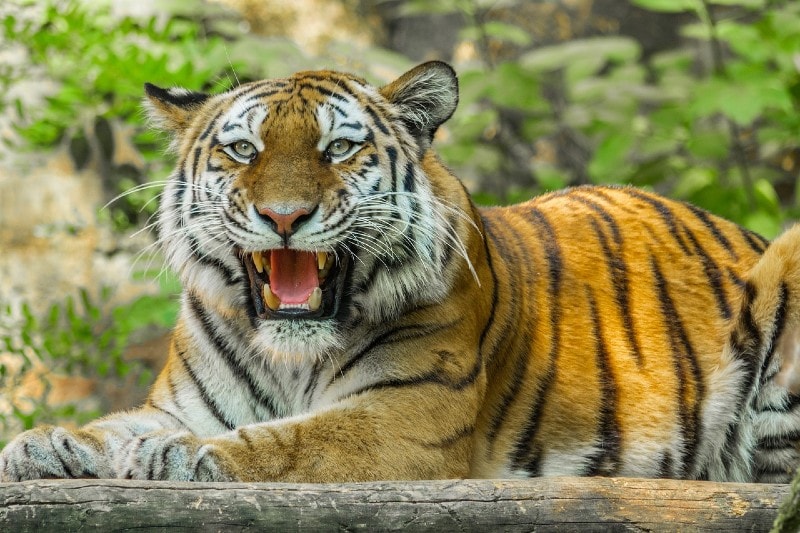
| Origin | South Asia |
| Origin Date | Around 2 million years ago |
| Height | 6-10 feet |
| Weight | 220–660 pounds |
Some of the world’s strongest animals include tigers. They can take down prey far larger than themselves because of their strong jaws, sharp claws, and muscular bodies. They have swift legs capable of running at up to 40 mph. Tigers weigh up to 660 pounds and have a 10,000-pound maximum swipe force.
The oldest tiger fossil discovered in South Asia dates back 2 million years, suggesting that tigers may have roamed the planet millions of years ago. Early tiger fossils have also been discovered in China, Java, and Sumatra.
12. Lion

| Origin | North America and Africa |
| Origin Date | 2,600,000 to 11,700 years ago. |
| Height | Up to 1 meter tall |
| Weight | 370–500 pounds |
Even though lions are among the strongest cats in the world, they might not be at the top of the list. They are renowned for their amazing strength and power, especially among big cats. Lions have robust bodies and exceptionally developed muscles. They possess the strength necessary to take down enormous prey thanks to their broad chests, sturdy legs, and strong shoulders.
According to genetic research, the lion diversified into several subspecies in eastern and southern Africa.
13. Liger

| Origin | India |
| Origin Date | Late 1800’s |
| Height | Up to 12 feet |
| Weight | 900–2200 pounds |
A male lion and a female tiger produced a hybrid called a liger. The physical traits of both parents’ species are present in the offspring of this interspecies connection. This hybrid can grow up to 12 feet in length, including the tail, making it the largest cat in the world.
Between the late 18th and early 19th century, the first known breeding of a male lion and a female tiger may have occurred in India. This incidence, like all previous liger births known to exist, occurred in captivity either due to unintentional mating or deliberate breeding activities.
14. Jaguar
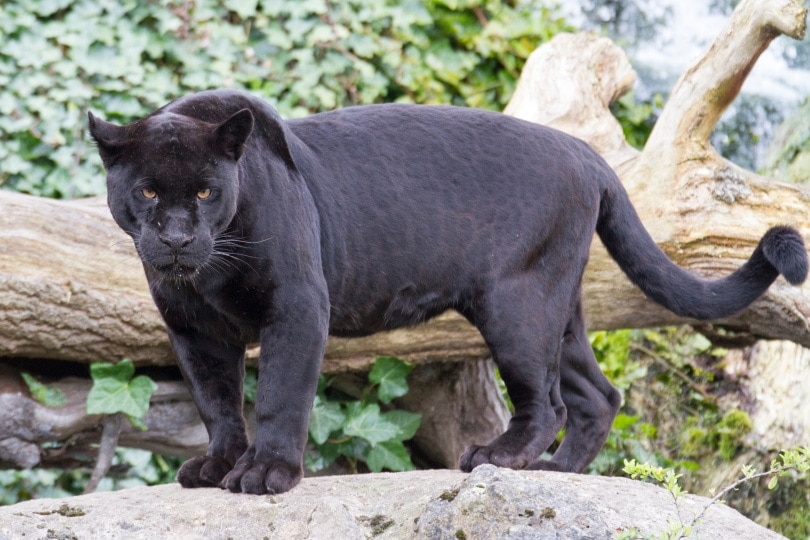
| Origin | Eurasia |
| Origin Date | 3 million years ago |
| Height | 43–75 inches |
| Weight | 100-350 pounds |
The Tiger and the Lion are the two largest cats in the world, with the Jaguar coming in third. Because of their massive physique and outstanding athletic ability, they are regarded as one of the strongest cats in the world. Jaguars have one of the strongest bites of any animal and have the strongest bite of any big cat. Their jaws are so powerful that they can break the prey’s skull, making it easier to eat.
Jaguars first appeared in Eurasia about 3 million years ago. During the Ice Age, they progressively migrated east and west, eventually colonizing regions from southern England to Nebraska and South America. Modern jaguars are 15% smaller in size than their ancestors. Jaguars and lions have DNA from the Panthera genus, which originated 6–10 million years ago.
Conclusion
The world of cats is fascinating, and there is no denying the strength of the wild and domestic felines we discussed. While the strongest cats may be easily recognized in the wild, several domestic breeds display powerful qualities just as impressive as their wild relatives. When it comes down to it, cats are incredible predators that could easily live without humans, and that ability, along with the physical attributes that allow them to stalk, hunt, pounce, jump, and climb, make them strong creatures in their own right.
- Next on your reading list: 14 Most Talkative Cat Breeds: Vocal & Chatty (With Pictures)
Featured Image Credit: Utekhina Anna, Shutterstock



